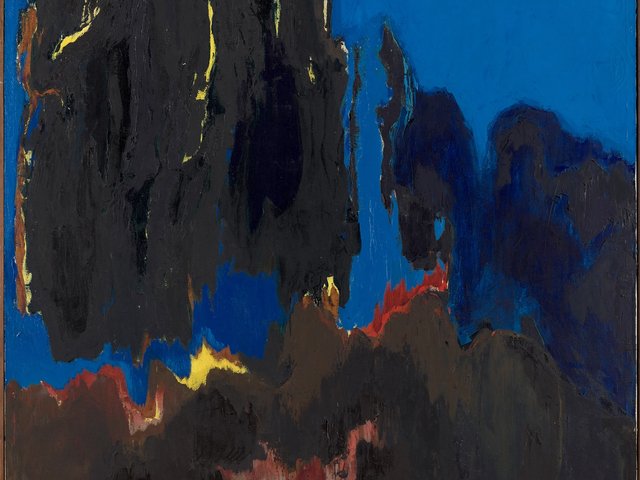In 1958, 22-year-old Carlos Villa (1936-2013) received a troubling answer to a pressing question. As a young Filipino American student at the San Francisco Art Institute, Villa was curious to know about the history of Filipino American art. But when he asked his professor, Walt Kuhlman, he was bluntly told, “There is no Filipino American art history.” By Villa’s telling, this conversation catalysed a lifelong dedication to exploring and expressing his identity through his work as an artist, activist and educator.
Carlos Villa: Worlds in Collision, now on view at the Newark Museum of Art, is the first-ever institutional solo exhibition dedicated to the artist’s groundbreaking career. It brings together over 35 rarely shown works by the artist, including his renowned feathered cloaks, installations reflecting on San Francisco’s manong community and his early Abstract Expressionist paintings. The show is also, astonishingly, the first-ever solo exhibition at a US institution dedicated to any Filipino American artist, illustrating the stark lack of representation that has persisted since Villa’s student days.
First Impression (1981), a monumental mixed-media canvas hung on one of the exhibition’s far walls, powerfully expresses and combats this erasure. Possibly inspired by David Hammons’s body prints of the same era, Villa began incorporating his own body into his works in the late 1970s as a way to make himself, as a Filipino American, visible in the art world. In First Impression, Villa imprinted his paint-covered face 60 times onto individual pieces of canvas. These were then stitched together in a grid, and punctuated with miniature, effigy-like dolls made of bone and fabric.

Installation view, Carlos Villa: Worlds in Collision, at the Newark Museum of Art. All works © Mary Valledor, Estate of Carlos Villa. Photo by Richard Goodbody
The ghostly and almost ethnographic quality of these prints evokes the complicated experience of being simultaneously unseen and othered. Each time Villa pressed his face into the canvas, he was met with the surface’s resistance, allowing for only a spectral impression. “It was a common thing with all kids of my generation to feel ashamed that they were Filipino,” Villa once said in an interview with the artist Cynthia Charters. He recounted how his parents, during the Second World War, feared becoming targets of violence because they looked Japanese. “Every time they would hear people walking down the street at night they would whisper ‘be quiet’. I’d freeze because of their fright.”
And yet, despite the work’s deceptively muted presence, the physical, visceral act of Villa using his body as a mark-making tool insists that we know him. “Villa started making these prints of his face after his mother passed away in 1978,” says exhibition co-curator Tricia Bloom. “When he saw all of them together, he said that he saw his mother through them.” With this simple, poetic act, Villa was able to demand that we see not only him but his ancestors. First Impression is a work that channels the past in order to challenge present conditions and strive for a better future in which all of us are recognised and seen on our own terms.
- Carlos Villa: Worlds in Collision, Newark Museum of Art, Newark, New Jersey, until 8 May.




